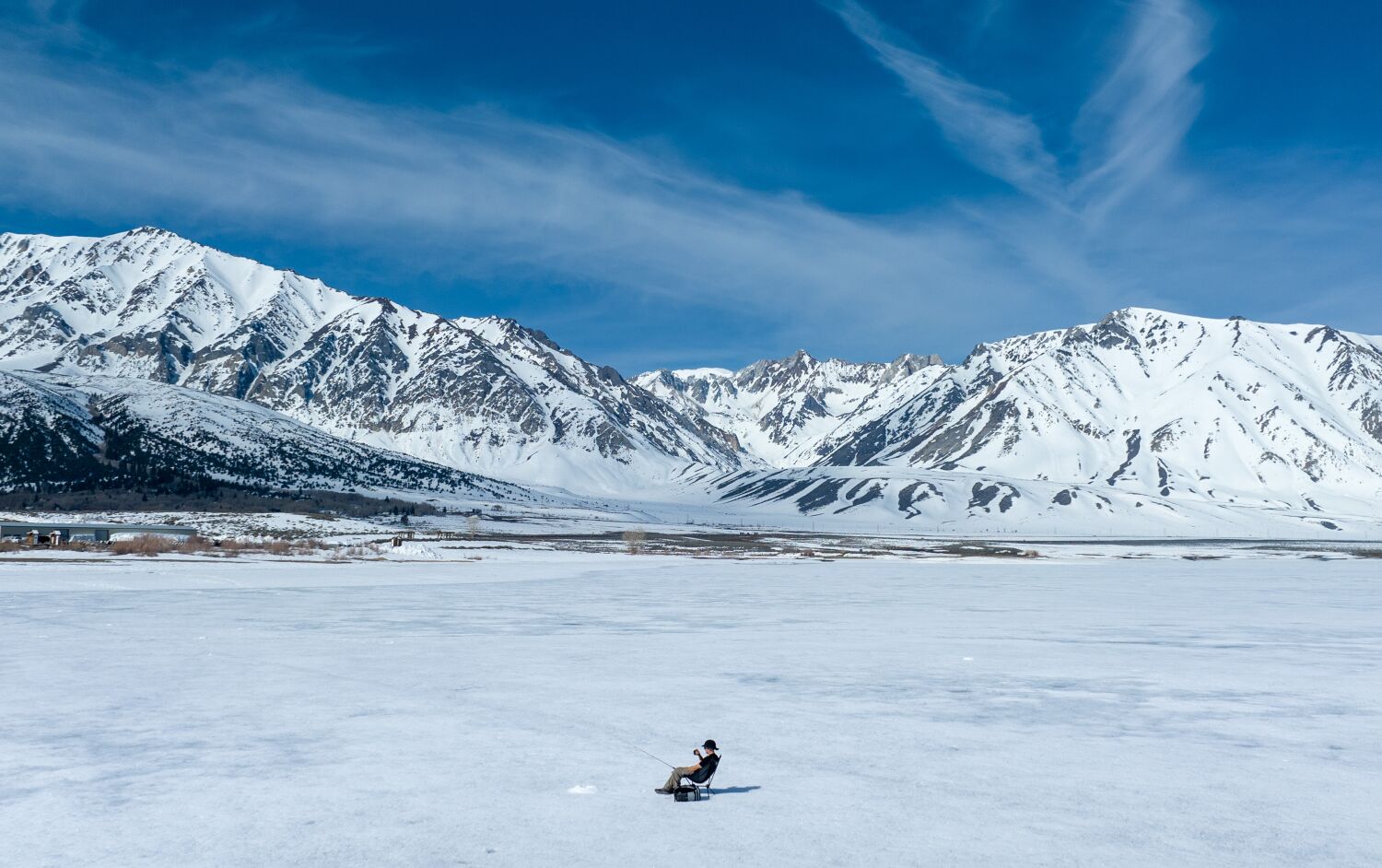Global Courant 2023-05-02 17:00:56
California’s remarkably wet winter may be several weeks behind us, but flooding remains a major threat as most of the state’s massive snowpack has yet to melt, and more snow is forecast this week.
“This melt is really just getting started,” said Daniel Swain, a climate scientist at UCLA. “I know it’s hard to believe, but we’re coming into May and the peak is probably yet to come.”
A Department of Water Resources crew conducted its fifth snow survey of the year on Monday and determined that statewide snow cover was 254% of normal for the date, with the equivalent of 49.2 inches of water in the snow.
#CA‘s current #snowsuit is still one of the highest on record, even though spring snow melting has begun. The last time snow was measured in May at the Phillips Station snow track was in 2020 and only 4.5 cm of snow was measured with only 0.5 cm of water content pic.twitter.com/RnUjwZVOxD
— CA – DWR (@CA_DWR) May 1, 2023
The study, conducted at Phillips Station near southern Lake Tahoe, marked the first time since 2020 that measurable snow fell at Phillips Station on May 1. That year there was only 1.5 inches of snow on the ground, with a snow-water equivalent of 0.5 inches.
“No matter how you look at the data, only a handful of years in the historical record compare to this year’s results,” said Sean de Guzman, DWR’s manager of snow surveys. Last month, 2023 joined 1952, 1969 and 1983 as the only years with a snowpack above 200% on April 1, the date when it is typically deepest.
Snowpack in the southern Sierra Nevada remains even higher, measuring 326% of the average on Monday, with 51.2 inches of snow water equivalent.
The bounty has eased a scorching drought and significantly boosted California’s water supply, but officials continued to underline flood risk in the San Joaquin Valley, which sits like a bowl at the foot of the southern Sierra and has already experienced major flooding this year. floods. year.
Despite a major warming at the end of the month, April temperatures were generally cooler than average, and only about a foot of snowwater equivalent melted regionally and statewide. As a result, most of it is ready to flow downhill for the summer.
“The vast majority of what was there at its peak is still there as we head into May, even in the wake of major heat waves,” Swain said.
A region of particular concern is the Tulare Lake Basin, where a series of atmospheric rivers have refilled the once dry Tulare Lake. Governor Gavin Newsom, who visited the area last week amid standing water and flooded farms, said water could continue to flow into the area for the next 16 weeks.
Inflow into the basin is likely to peak around late May or early June, Swain said. An emerging cold storm, expected to bring more rain and snow to the southern Sierra and surrounding foothills this week, can only serve to delay the peak of melt until further into the summer.
In parts of the Tulare and San Joaquin basins, “it’s going to get worse before it gets better,” he said.
Indeed, officials from the DWR and other agencies continue to prepare for runoff and flooding. The joint state-federal Flood Operations Center has delivered more than 1.4 million sandbags, 1 million square feet of plastic sheeting and 9,000 feet of “muscle wall” barriers statewide since January and is ready to deploy more resources if needed, officials said.
The U.S. Army Corps of Engineers — which owns and operates the Tulare Basin’s four major dams at Lake Success, Lake Isabella, Pine Flat, and Lake Kaweah — also releases water to ensure there is room for the runoff to to collect water from the snow. The reservoirs have a capacity of 74%, 62%, 43% and 22% respectively.
However, state and federal officials are calling for continued vigilance as runoff projections remain high. The inflow into the Tulare Lake area ranges from 269% to 443% of the average through July, state data shows.
“The snowpack will not disappear in a week or a month, but will lead to continued high water flows in the San Joaquin and Tulare basins for the coming months. This data will help us inform water managers and ultimately help protect communities in these regions DWR director Karla Nemeth said in a statement following Monday’s snow survey.
Swain similarly said that much of the threat could come from cumulative high flows — as opposed to individual outbursts of extreme flows — which could contribute to escalating problems in the San Joaquin Valley.
“Things are becoming more and more saturated and there are fewer and fewer places for that water to go in the Tulare Lake Basin and surrounding areas,” he said.
Despite the flood risk, the remarkable snowpack has been a boon to California’s water supply and drought. Less than 8% of the state is now classified as being in drought, according to the US Drought Monitor. Just three months ago, 90% of the state was in drought and about 10% was abnormally dry.
In addition, the DWR announced last month that for the first time since 2006 it will allocate 100% of requested supplies from the State Water Project — a system of canals, reservoirs and dams that supplies water to 29 agencies and about 27 million Californians. Last year’s allocation was only 5%.
The U.S. Bureau of Reclamation, which provides critical agricultural irrigation and water supplies in the state, also announced a 100% allocation for most regions.
With more rain and snow on the horizon, a degree of uncertainty remains about the precise timing and location of snowmelt and flooding this season. Forecasts for significant flooding along the Merced River in Yosemite National Park largely fell through this weekend, and park officials reopened the area early.
And while some have already taken rafts to the state’s high, fast rivers, officials have asked residents to exercise caution, including leaving sandbags and other flood-fighting items in the Tulare Lake area.
Snowmelt-induced high river flows could persist “into July” in some watersheds, especially in the southern Sierra, DWR officials wrote in a statement. post about the snow survey on Facebook.
“It is critical that Californians continue to pay attention to their local county emergency officials and warnings in the coming months as concerns about flooding from snowmelt will be a marathon, not a sprint, this year,” the agency said.




